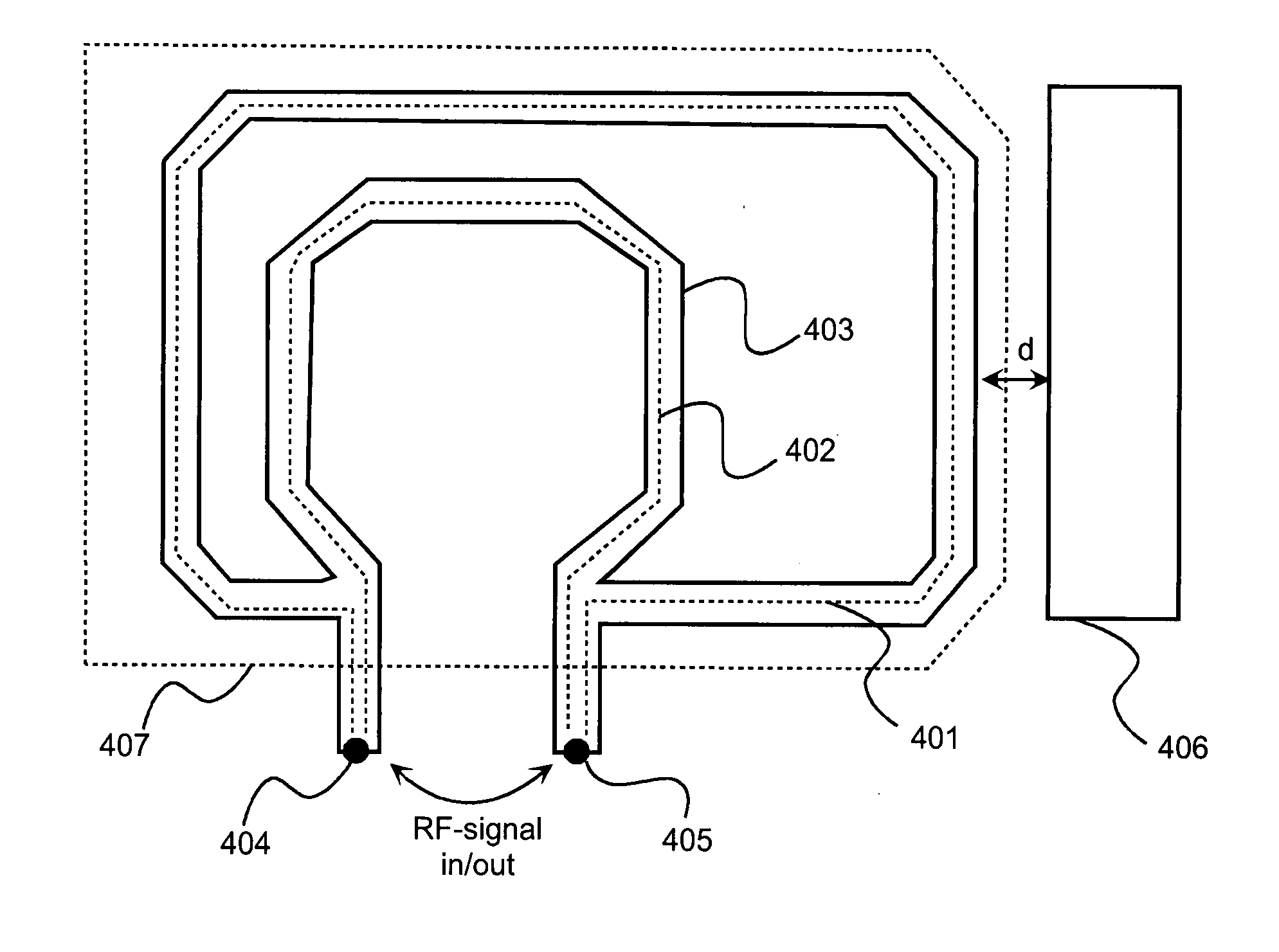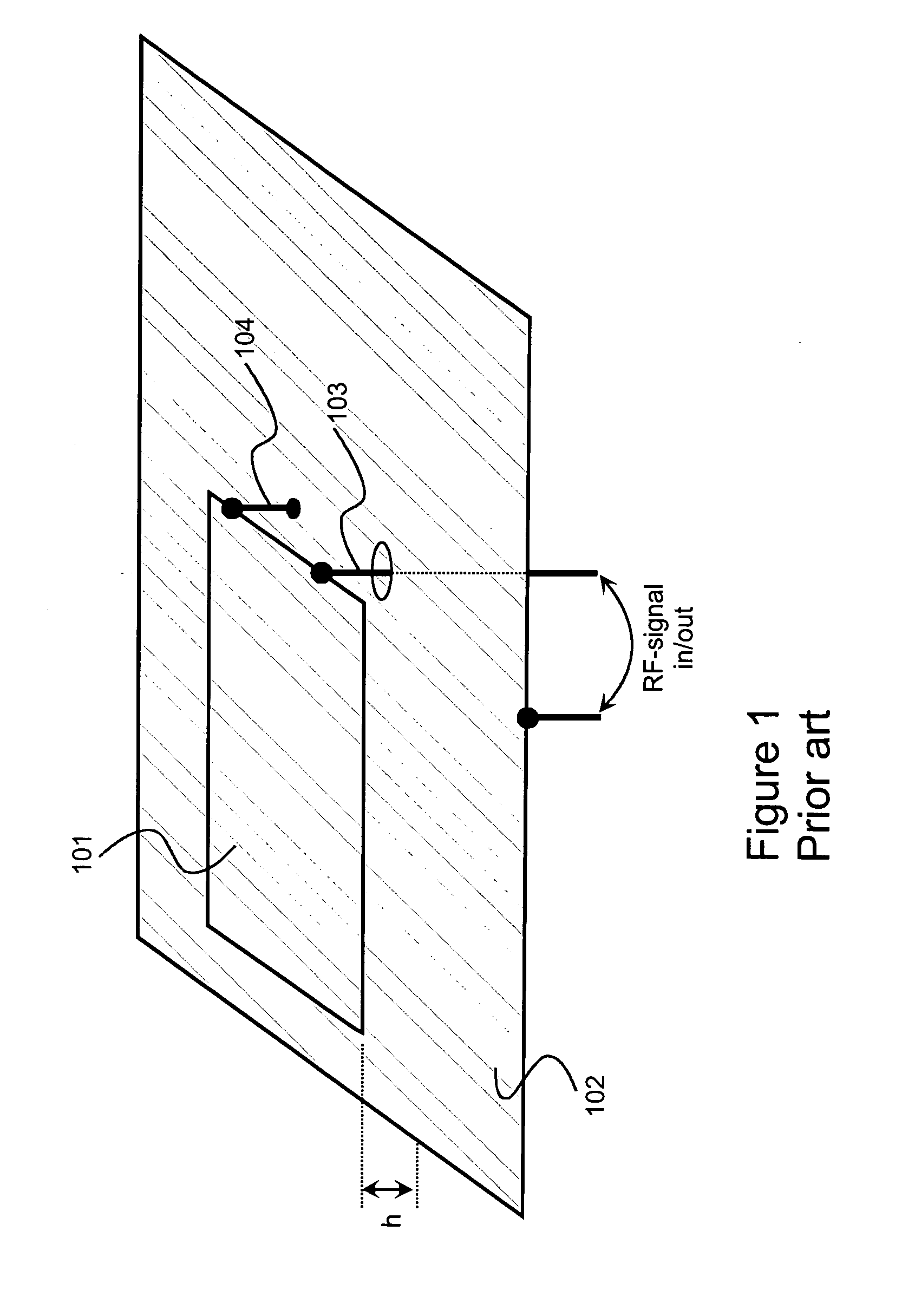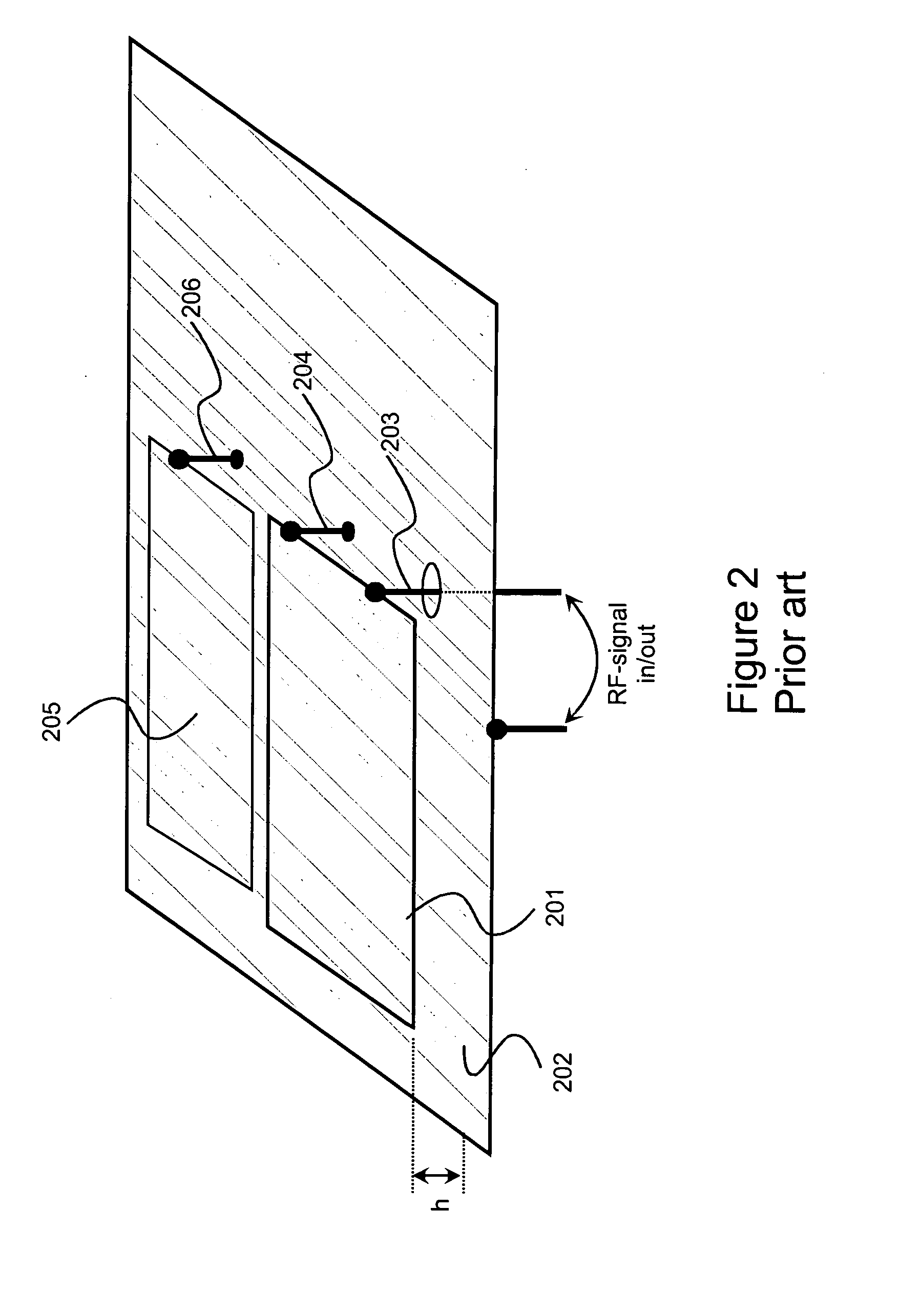Loop antenna with a parasitic radiator
- Summary
- Abstract
- Description
- Claims
- Application Information
AI Technical Summary
Benefits of technology
Problems solved by technology
Method used
Image
Examples
example a
[0049] Example A in FIG. 7 shows an exemplary embodiment of the invention in which characteristics of an antenna structure are affected by using a coupling element 705 between an antenna loop 701 and a parasitic radiator 702. A coupling element 705 may comprise active and / or passive electrical components. In a general case, there can be one or more coupling elements. In example B the coupling element is a low-impedance galvanic contact 704. In example C the coupling element is a capacitor 706 with the aid of which the coupling between the antenna loop and the parasitic radiator can be made to have a strong capacitive nature. In example D there is an active electrical component as the coupling element. A capacitance diode 707 acts as the coupling element and its small-signal capacitance value is controlled with a dc-bias voltage Ubias fed via ac-decoupling coils 708 and 709.
[0050]FIG. 8 shows an exemplary embodiment of the invention in which there are two parasitic radiators 802 and ...
PUM
 Login to View More
Login to View More Abstract
Description
Claims
Application Information
 Login to View More
Login to View More - R&D
- Intellectual Property
- Life Sciences
- Materials
- Tech Scout
- Unparalleled Data Quality
- Higher Quality Content
- 60% Fewer Hallucinations
Browse by: Latest US Patents, China's latest patents, Technical Efficacy Thesaurus, Application Domain, Technology Topic, Popular Technical Reports.
© 2025 PatSnap. All rights reserved.Legal|Privacy policy|Modern Slavery Act Transparency Statement|Sitemap|About US| Contact US: help@patsnap.com



